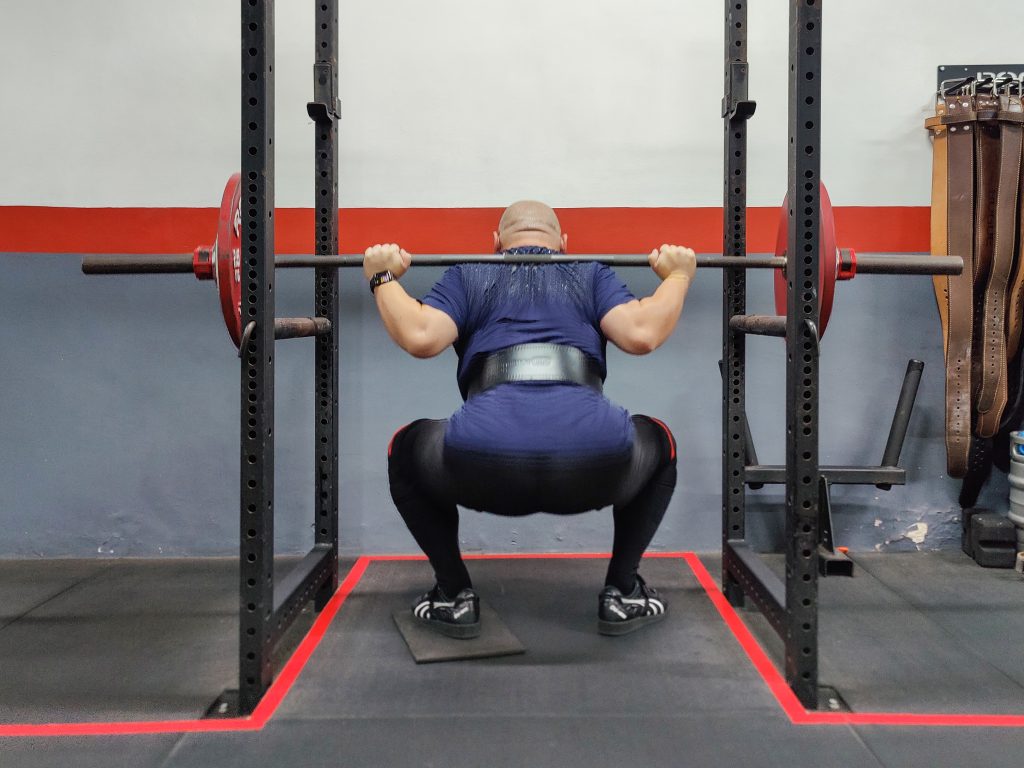
Did you know that up to 70% of the population has a leg length discrepancy?
Majority of the time, the difference is not significant and because it doesn’t really affect daily life function, most people aren’t aware that they have it.
When barbell training, however, a difference in leg length may cause problems. This will of course depend on the difference – a significant delta, of about 10mm or more, will be noticeable and needs to be addressed. Some people are more sensitive and may have symptoms with a discrepancy of less than 10mm.
In this article, we’ll show you how to tell if you have a leg length discrepancy, why it matters, and what to do about it.
What is leg length discrepancy (LLD)?
First, we need to make a distinction between “functional” and “structural” leg length discrepancy (LLD).
A functional LLD is a musculoskeletal issue, making it look like one leg is shorter, though it actually isn’t. There are many causes, usually soft tissue issues and/or feet conditions like collapsed arches.
A structural LLD is due to anatomy, where the bones in one leg are shorter than the bones in the other. It can occur from birth or bone injuries.
We make this distinction, because functional and structural LLD are treated differently. Unfortunately, one can get misdiagnosed with functional LLD when you actually have structural LLD, resulting in treatment through therapeutic exercises that don’t solve the problem of a physically shorter leg.
In this article, and in the context of barbell training, when we say LLD, we mean structural LLD.
How does it affect you while lifting?
Having a difference in leg length will result in your pelvis being not level. If you’re lifting with a non-level pelvis, your intervertebral discs will be loaded with a lateral asymmetry. This loading asymmetry may cause problems and when it does, it manifests as lower back pain, hip pain, or sometimes knee pain.
Hence, the priority is to restore the a level pelvis by making the legs the same length. Other resultant asymmetries will usually correct themselves over time when the lifts are performed with proper technique, once this basic issue is fixed.
Can LLD be observed with a trained eye?
Depending on the degree of the discrepancy and the experience of the coach’s eye, a LLD can be observed while coaching the squat.
When we coach a lifter on the squat, we’re able to see slight differences between their legs, hip height, knee height, or thigh angle – these are indicators that the lifter may have a LLD.
Still, we don’t immediately assume that they have actual structural LLD. It’s possible that they have functional LLD, or basic movement issues that can be corrected by coaching or proper footwear.
However, if a lifter displays an obvious structural asymmetry, we’ll investigate the LLD further.
How to tell if you have a LLD
To check if your lifter has a LLD, we perform a rudimentary but effective test.
Step 1: Prepare
We’ll first get you to lie flat on your back on the floor. Preferably, the floor has some parallel or perpendicular lines to act as a visual reference.
We’ll kneel in front of you and push onto your shins to flex your hips and bend your knees. We’ll then rotate your knees side to side and wiggle them around. The goal is to relax any tension in your lower back and hips.
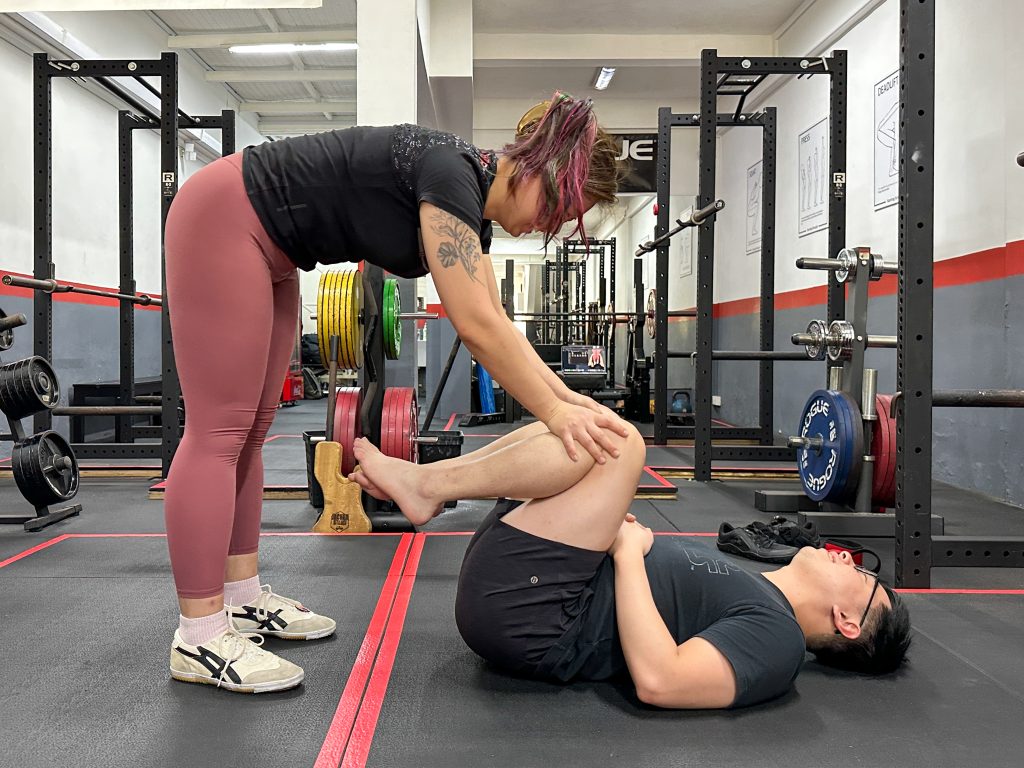
Step 2: Straighten the legs
We’ll then gently lower your legs to fully straighten them out. Don’t do this yourself, because your habitual response will be to tighten up again, after we’ve already relaxed your back.
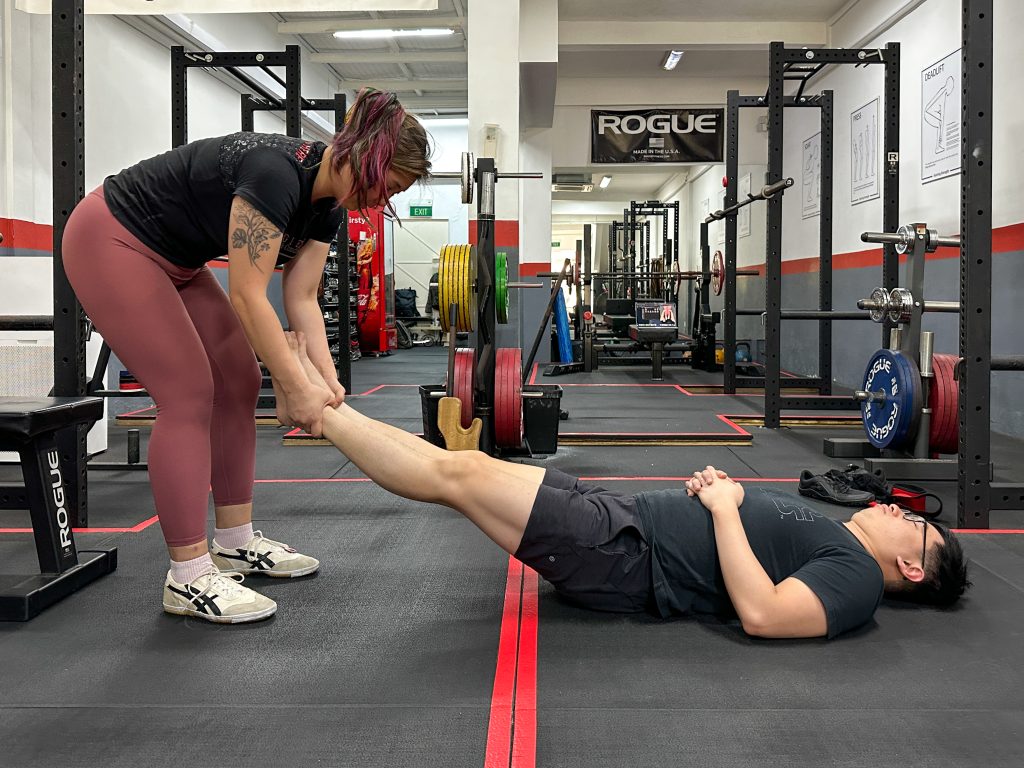
Step 3: Square the pelvis
The anterior superior iliac spine (ASIS), also called the hip pointers, are the prominent points on the front of your hip bones. We’ll place our thumbs on their inferior sides, and observe from above to make sure that they are level with each other.
If they’re not level, we’ll pull on your legs until the pelvis is square. Once level, any difference in leg length below your hips will show up at the knees and ankles.
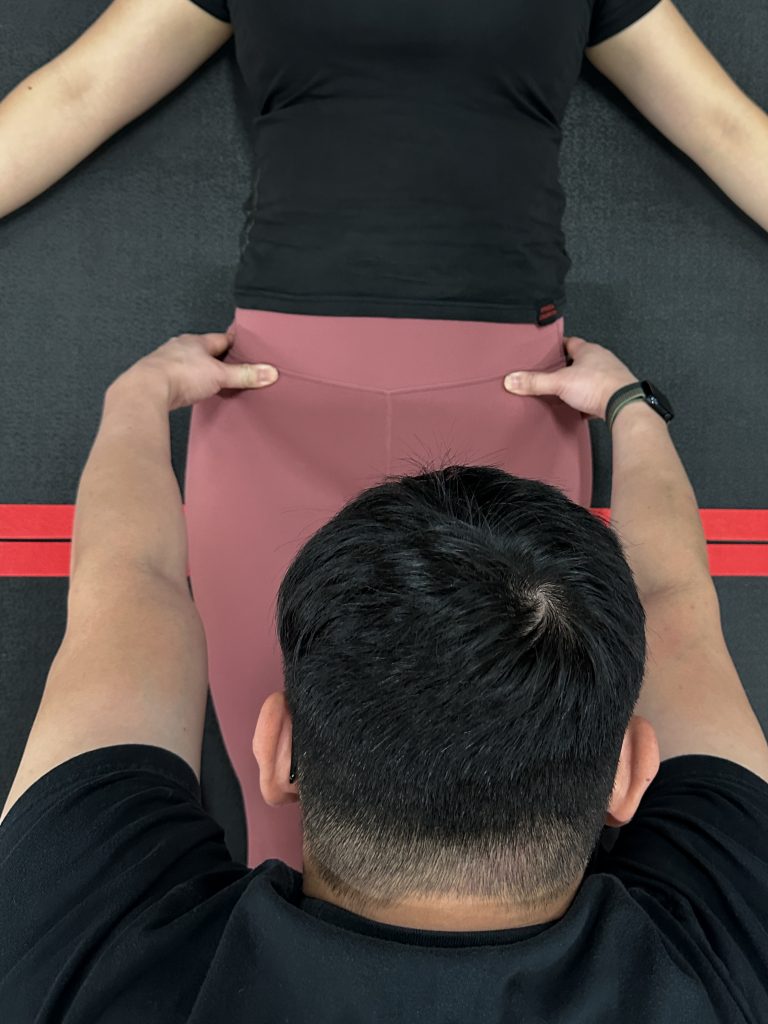
Step 4: Check the knees
From the now-level hips, we’ll move down to the knees and place our thumbs just above the patellas (knee caps).
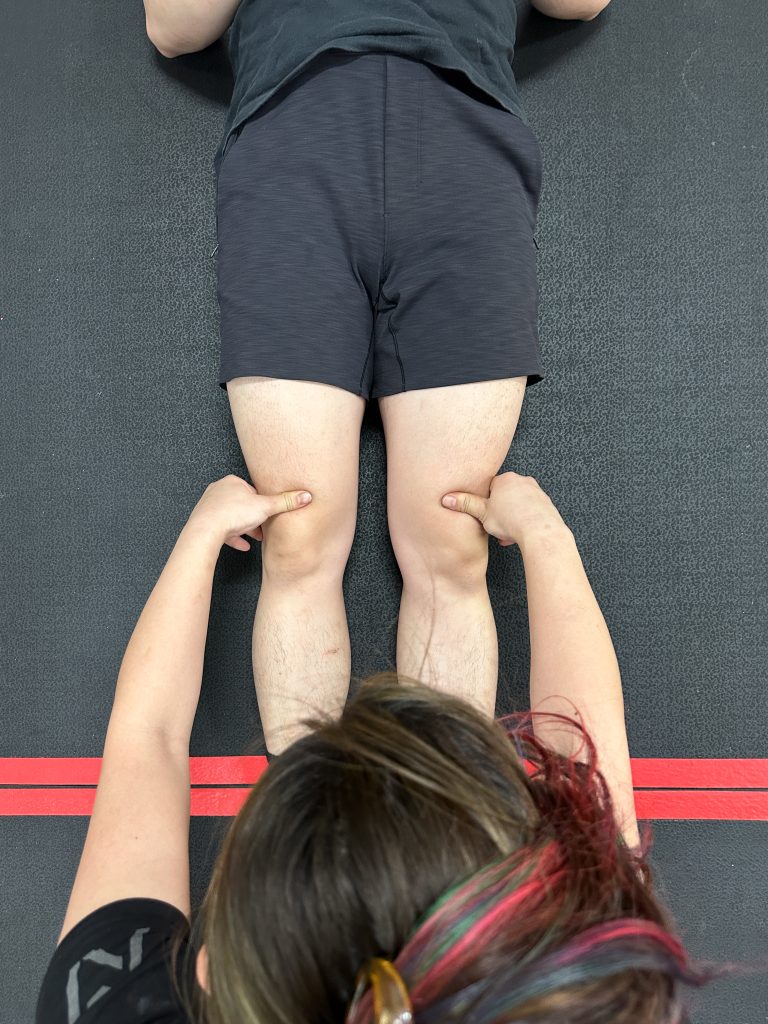
To prevent a visual bias, we first try to go by feel, and not by eye. Only if our thumbs feel like they are in the same place on both legs, then we visually check for levelness. At this point, the hips are level; so if the patellas aren’t in line, it means that you have a shorter femur on the side of the patella that’s “higher”.
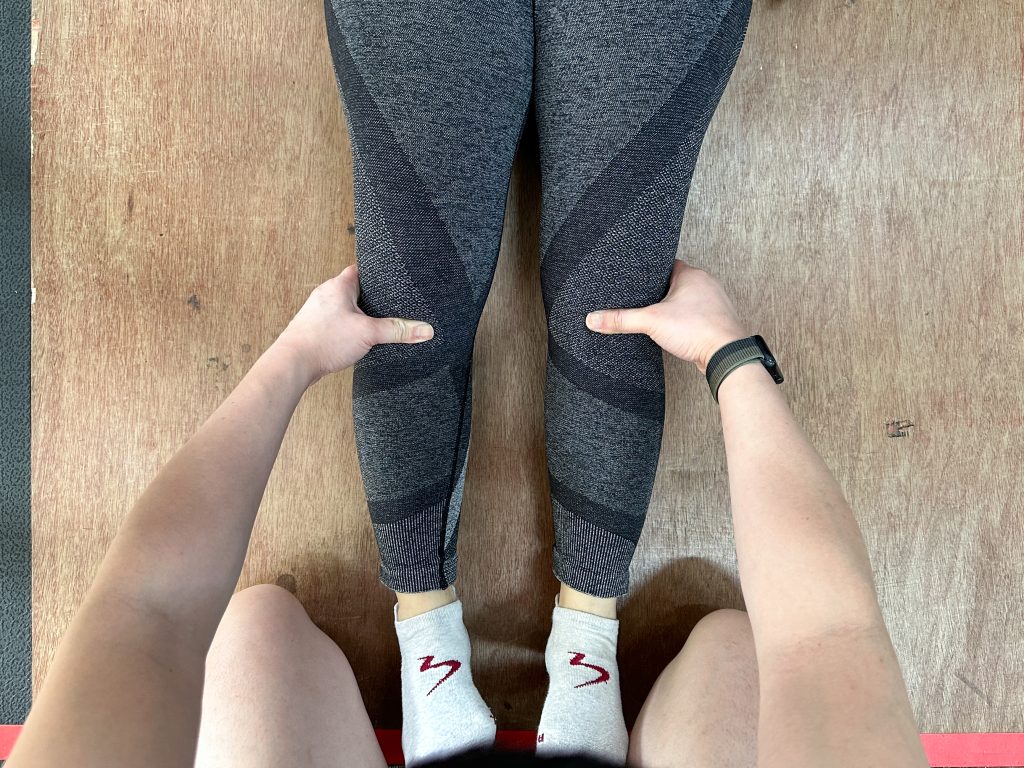
Step 5: Check the ankles
If the patellas are still level, we’ll move on to the medial malleolus. This is the small prominent bone on the inside of your ankle. Visually, we’ll check the ankles for level, and also check the heels.
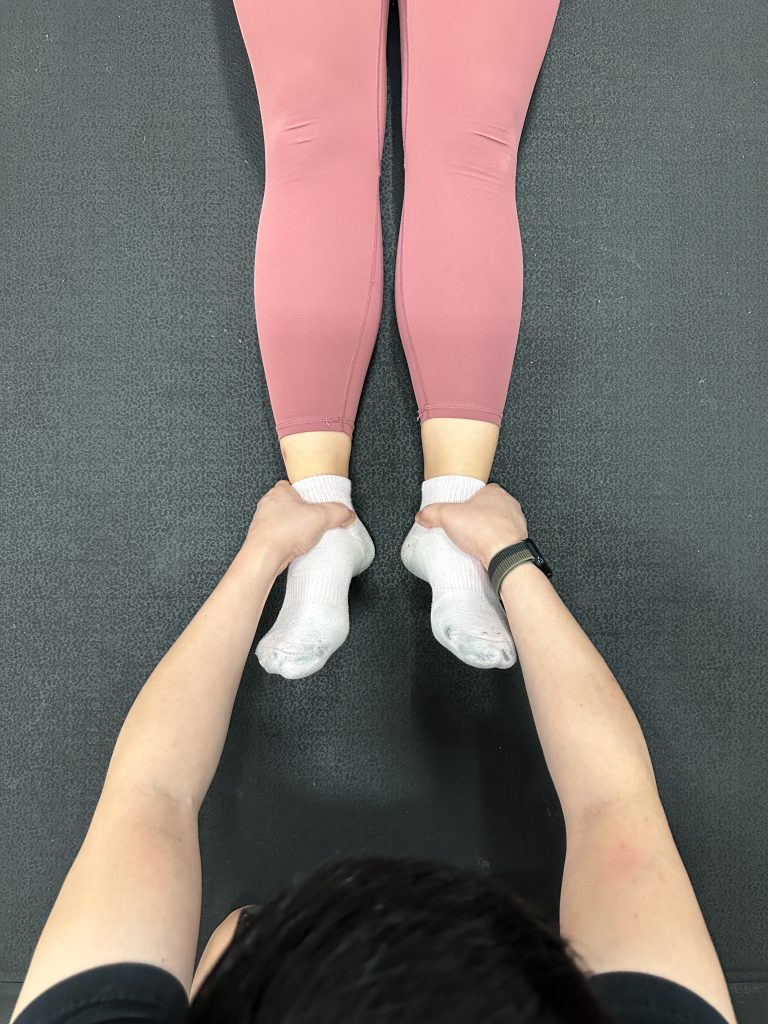
If they’re not in line, but the knees are, then you have a shorter tibia on side that the medial malleolus is “higher”. You could have either a short tibia or short femur, though the former is way more common.
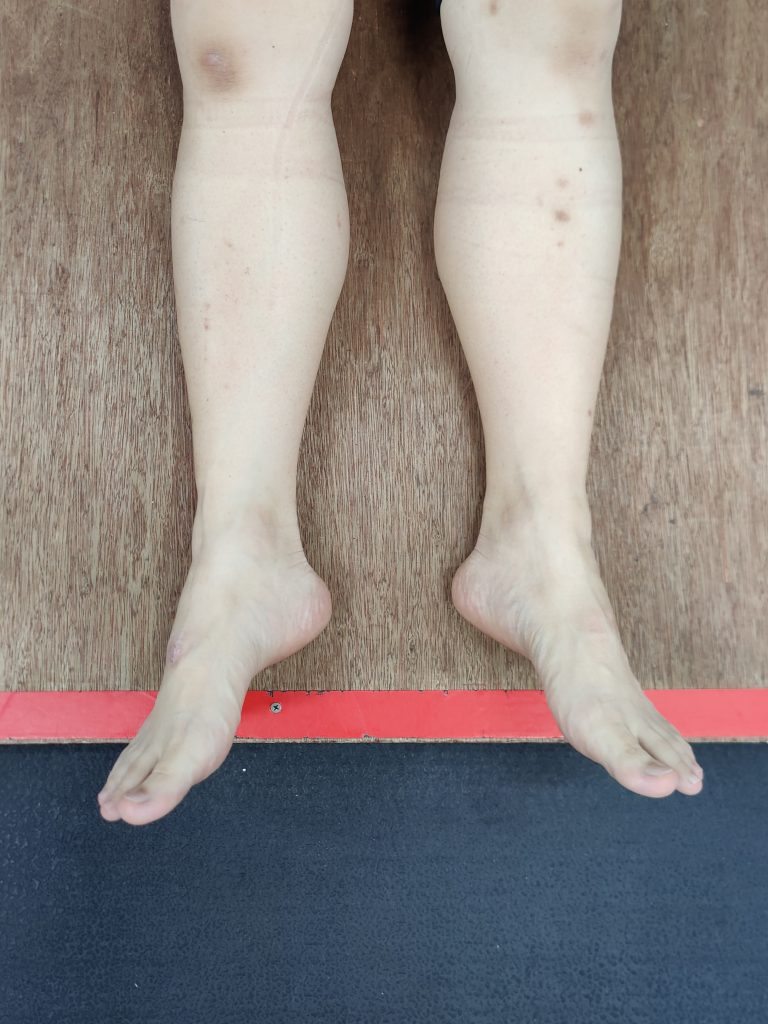
Occasionally, some people may have legs of equal length, but with a shorter femur on one leg and a shorter tibia on the other. Even though there’s no ‘discrepancy’ per se, the different segment lengths can cause issues – not seen very often, but it can happen. That’s why we need to check each segment individually, and not just the entire leg length.
Solutions for your LLD
To correct for a structural LLD, you need to compensate for the leg length difference by adding a shim to the shorter leg by that same difference.
In the gym, we have a bunch of rubber mats for this purpose. They are a good fix – you stand your shorter leg on them, and adjust the height to make up for the difference. However, this fix can get a bit iffy when you’re trying to find the mat and place your feet perfectly on top of it on a heavy squat.
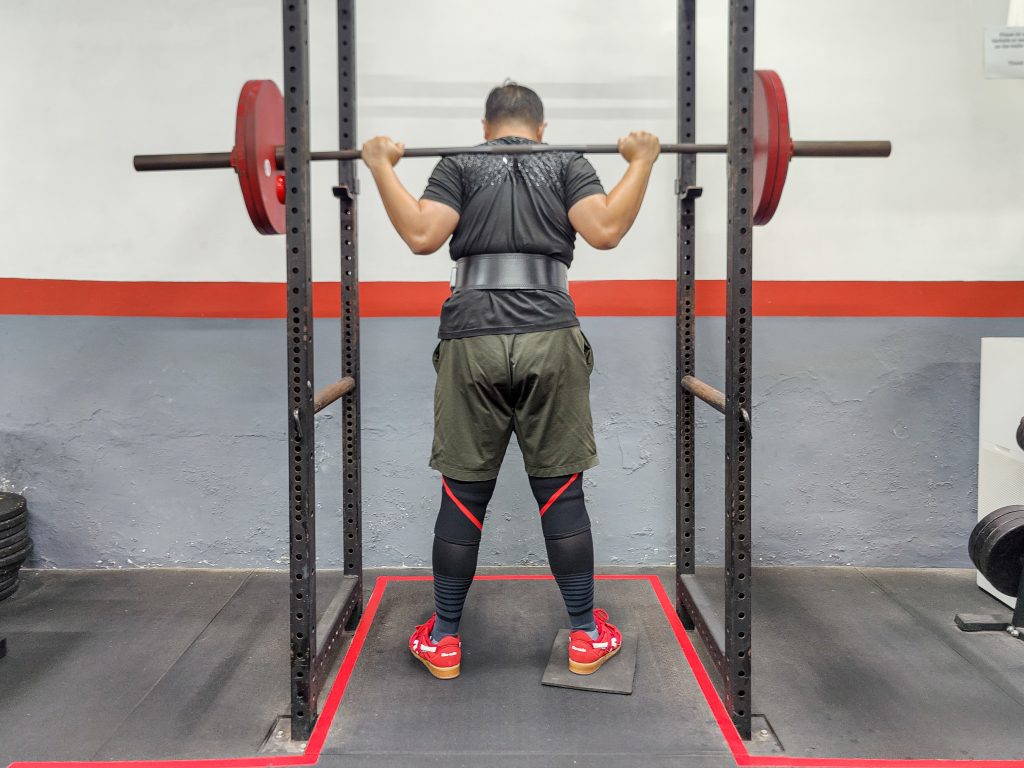
While some suggest adding shoe inserts (like insoles) as a more permanent way to remove the discrepancy, we don’t recommend it. Adding an insert in one shoe will make your feet fit differently in that shoe.
The best solution, especially if you’ve already invested in a proper weightlifting shoe, is to add a shim under the shoe. The shim will be a piece of dense rubber that uniformly adjusts the whole shoe sole’s thickness.
Where do you get a shim? Go to a cobbler or shoe repair shop. Because you don’t want your shoe soles to be of different materials, first get them to remove the sole of the shoe, then put the shim on, then finally stick the sole back on.
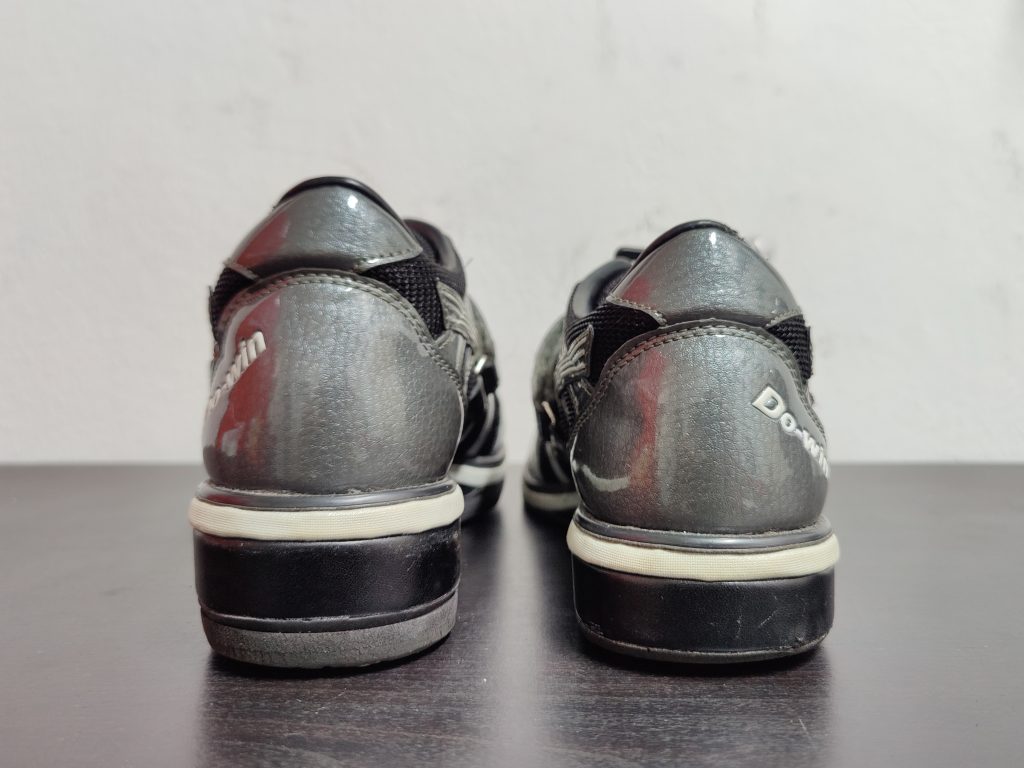
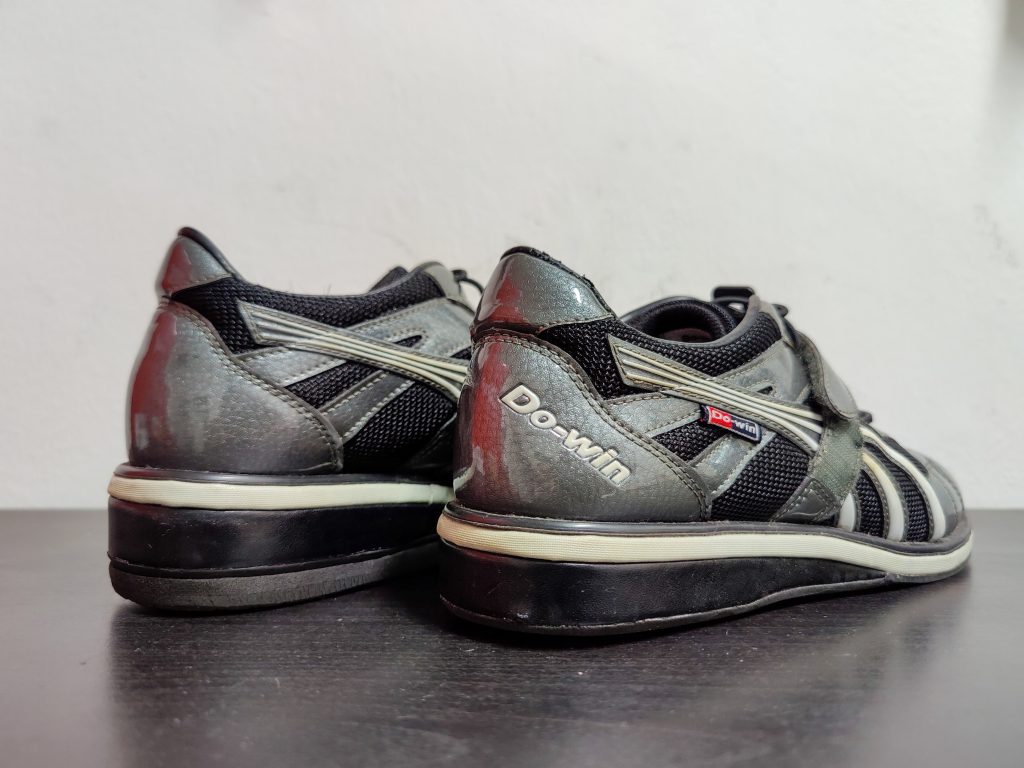
How do you identify the right shim thickness? This is where a coach comes in handy, without resorting to actual imaging. We’ll use the test described earlier to measure the difference and shim the shorter leg till we get as close to level as we can. Take that measurement to the cobbler.
Please note: while this test is quite successful in identifying LLD for purposes of barbell training, it’s almost impossible to know the precise difference with this method. If you’re more comfortable getting a formal diagnosis and knowing the precise difference, you can consult a doctor who can provide bone imaging.
Lastly, know what kind of structural LLD you have. If you have a short tibia (the most common), it can be fixed with a shim alone. But if you have a femoral discrepancy, a shim will level your pelvis but give you uneven knees. So in addition to the shim, you also need to take a staggered stance – the feet with the shorter femur will be placed slightly behind of the other feet the same distance as the femoral discrepancy.
Most people are not aware. Don’t be.
LLD is surprisingly common. Most people don’t know they have it, because a minor deviation in leg length doesn’t affect daily function for the general population.
But if you’re a lifter with LLDs, the asymmetrical loading on the intervertebral discs may cause issues. If you suspect that you do have a LLD, we strongly recommend that you use the test mentioned above to confirm your suspicions. As soon as you know that you have a LLD, use a shim to rectify the discrepancy.
Not sure if you’re measuring it right? Our coaches with years of experience can identify if you have uneven legs, or other alignment or technique issues. Contact us to find out more.

